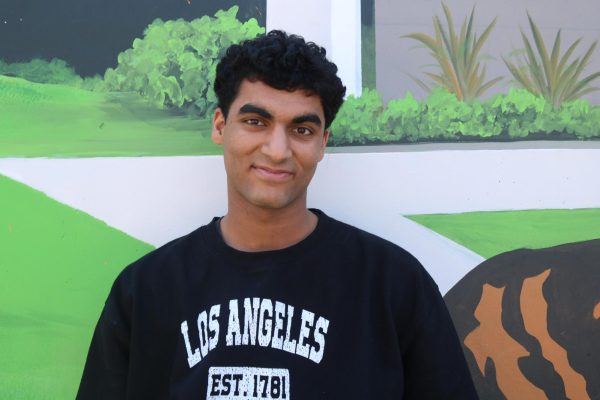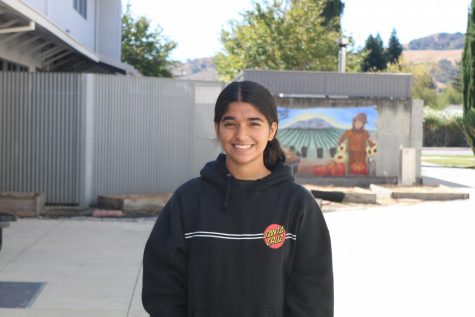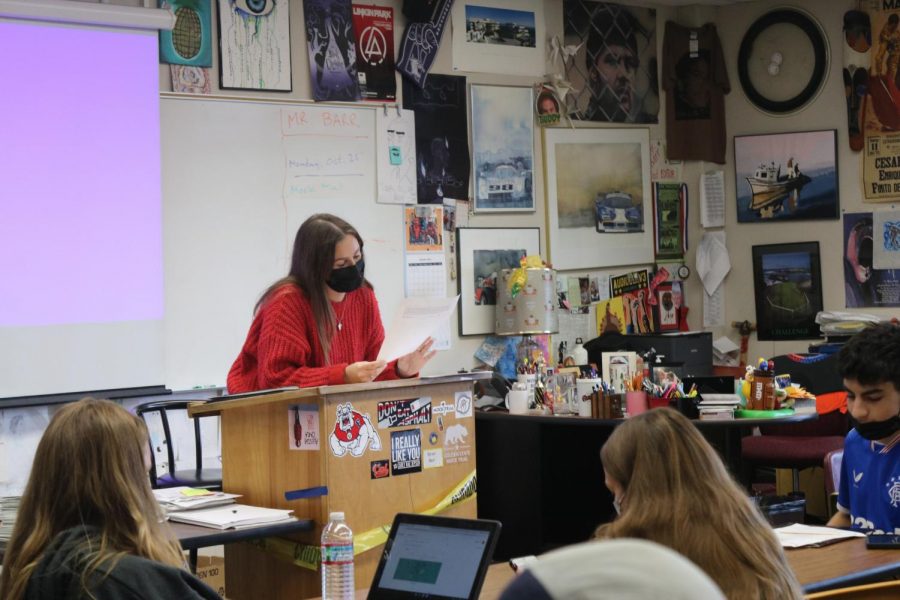Pandemic worsens substitute shortage
Subs in short supply
Substitute teacher Annalise Downey the lesson plan for the day while substituting for an English class.
When no substitute teacher showed up for sophomore Derek Ono’s English class in October, Ono didn’t know what he and his classmates would do.
The class stayed in the room until their teacher finally showed up halfway through. The substitute never arrived to cover the class.
“The sub didn’t show up for the first 45 minutes,” Ono said.
Cal High and schools throughout the state are facing a substitute shortage that has persisted for years and has only gotten worse because the COVID-19 pandemic, said Cal’s Office Manager Candace Molano, who arranges substitute coverage on a daily basis.
“The pool of external subs has diminished because of COVID,” Molano said. “It’s not just our district. It seems to be statewide. There are shortages everywhere.”
The California Commission on Teacher Credentials, which oversees the licensing of subs, only issued 47,000 substitute teaching permits in 2020-21, compared to the 64,000 permits in 2018-19, according to CalMatters, a state nonprofit news organization that focuses on politics and state policy.
Cal resident substitute Preeti Gaur said COVID-19 makes the job of substituting for teachers more dangerous.
“People are scared because of COVID,” Gaur said. “[Subs] don’t meet the same set of students every day. [They] meet different sets of students, so you have more risk.”
Cal has been dealing with this shortage of subs by having other teachers cover for classes during their prep period, which is a free period teachers have.
“They would essentially follow lesson plans from the teacher, but it’s not an external sub,” Molano said. “It’s our own employees helping us cover. The incentive for the teacher is to get paid during their prep.”
English teacher Kalise Ahern, who used to be a substitute, says the shortage of subs has always been a problem, even before the pandemic.
“Just in general, there’s a teacher shortage,” Ahern said.
Ahern said being a substitute isn’t as serious of a career, and could be considered a side-gig, but with more qualifications. She believes substitute positions aren’t going to receive many applications, since it’s a part-time job that requires a person to have qualifications.
“Why would you sub if you [could] have a high-paying job?” Ahern said.
Most of the district substitutes are other teachers or retired teachers, support staff, and people who work in the district, Molano said.
Some departments in particular have problems finding substitutes. Qualified subs can put in their preferences for what subjects they want to cover, and they often don’t choose world language and P.E. classes.
“Because a lot of subs, in their mind feel like, ‘I want to do a good job’, but I don’t know the language,” Molano said. “Subs don’t always want to be out on a track or in a gym”.
Despite the shortage of substitutes, Molano feels there is a sign of optimism.
“Hopefully within time, things will change,” Molano said. “I just don’t know when that will be.”

Senior Abhinav Purohit is back for year three as the Social Media & Video Production Editor for The Californian. This year he hopes to strengthen the...

Freshman Dannika Shah is a first year photographer for The Californian. She is a swimmer on a swim team and coaches in her free time. In the future she...





